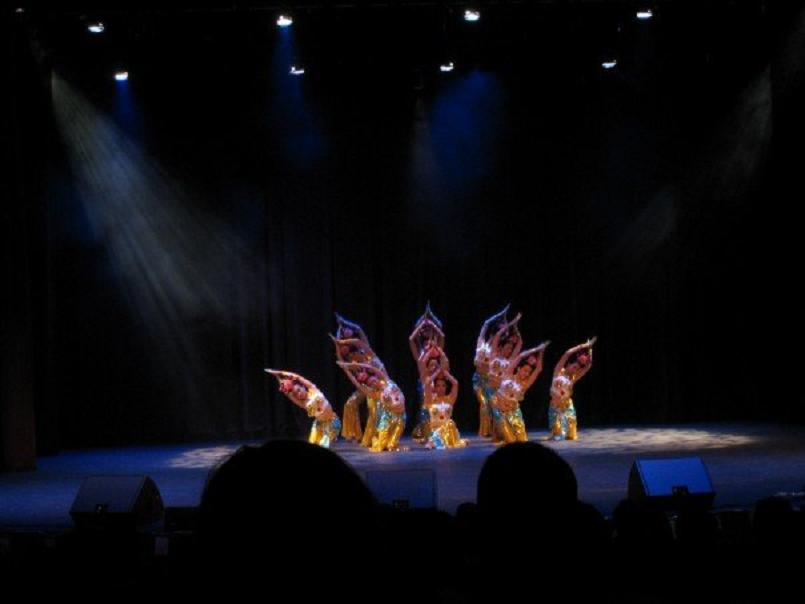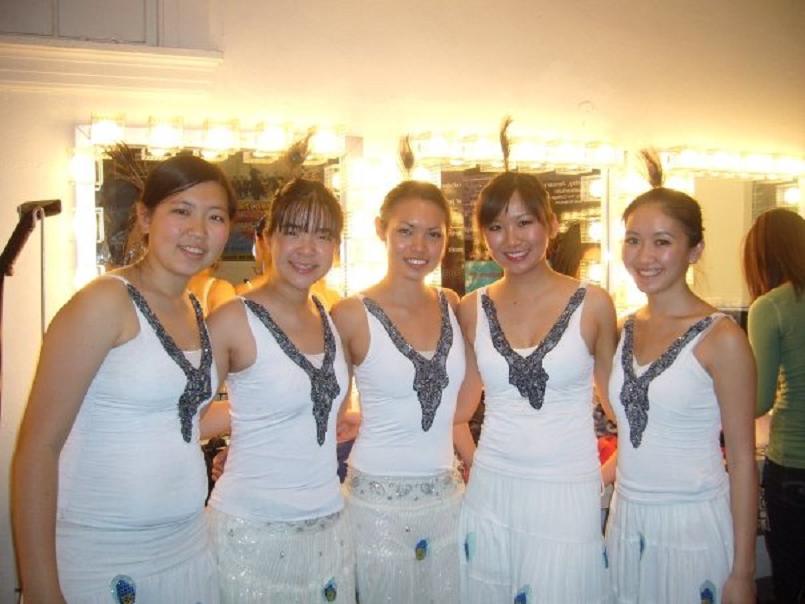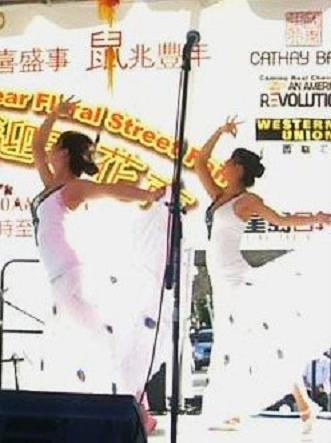USC TCDance – Traditional Chinese Dance:
- Water Village
- Dunhuang
- Dance of the Peacock
Joy spent ten years of her life in Wuhan, China and moved to the United States when she was ten years old. Her mother was from Shanghai, while her father was from Wuhan. Since her father was a highly distinguished professor, they were invited to live in Cedar Falls, Iowa so her father could teach at a local university. Next, she moved to Columbia, South Carolina for middle school (6th 8th grade). Finally, before attending USC, she resided in Bakersfield, California during her high school years.
Joy stated that there were loads of different tribes in China, which meant there were different types of dances for each of these tribes, whether it be folk dances or classical dances. Of the countless art forms there are in the long history of China, She believes that dance is the most expressive. She has had a passion for dance ever since she was young, but her parents forced her to play piano instead. One day, her friend from high school told her about USCs Traditional Chinese Dance team and it had sparked her interest. After moving to a dorm in USC, Joy immediately tried out and made this team in the fall semester of her freshman year. She rehearses with the team twice a week on Thursdays from 7:00 PM to 9:00 PM and Saturday mornings from 10:30 AM to 1:00 PM. She said that the time commitment is somewhat difficult, considering she is in a 6-year pre-pharmacy program at USC called TAAP. However, she believes that it is worth the hard work. She stated that she learned a lot about discipline while being in TCDance, and she also learned about the cultures of other tribes of China. This was particularly important to her because she stated that most Chinese people are part of the Han tribe, so it was originally difficult for her to learn about the numerous other tribes.
This first picture is of a dance entitled Water Village from the Dai tribe. It is Joys favorite Chinese folkdance. The colors of the dancers costumes are blue and white, symbolizing the water motif of the dance. This dance portrays maidens washing their hair, and playing with the water by the river. This dance accentuates the curves of the dancers by incorporating loads of hip and waist movements, which are analogous to the sinuous characteristics of water. This was a variation from a dance originally performed in a Chinese art school that won first place in the dancing competition. The captain of her dance team brought it over to the USC Chinese dance team and modified it.
This is a classical dance entitled Dunhuang. The initial picture is supposed to represent the Buddhist goddess Guaying. She is most famous for her multiple hands, which is the picture that is trying to be portrayed by the dancers in the initial picture of this second set of pictures. Joy stated that an actual city called Dunhuang has loads of gorgeous Buddhist temples. She said that the movements involved very small steps and flowing movements, almost as though they were walking on clouds. Their dresses were very long and covered their bare feet. The second picture is called The Lotus Flower and it is a representation of the goddess Guaying. These costumes, including the lustrous headpieces, were all obtained from China by their dance captain, who visits China every summer.
This dance portrayed above is called Dance of the Peacock. It is the most famous dance in China, and was made famous by a woman named Yang Li Ping. Joy described this dance as graceful and beautiful. The dancers were told to portray the beauty of a peacock with their bodies.
The USC TCDance team consists of mostly Chinese- Americans but some members are not full Chinese. They perform for organizations such as USCS Asian Pacific American Student Association (APASA), Chinese American Student Association (CASA), Underground Student Government (USG), the Special Olympics, and several Chinese communities around the USC area. Also, they have their own show each year at Bovard Auditorium. Joy feels as though it is important to carry on with showcasing traditional Chinese folkloric dances because it is a great way for the present generation to connect with the culture of the past. Many Chinese Americans of our generation attend Chinese school to learn things such as calligraphy, but most people go because their parents force them to. She says that Chinese dance is something that genuinely interests her, and the fact that her parents are not forcing her to dance fuels her desire to learn more about her culture on her own. She hopes that this desire will rub off amongst her peers not only her Chinese friends, but also anyone who is interested in the Chinese culture.
I completely agree with Joy in that dance is a highly effective means of connecting with a particular cultures past. These dances mentioned above are all very symbolic and graceful. Each of them deals with some form of nature. For instance, the Water Village deals with the essential element of water, Dunhuang involves a the glorifying of a well known goddess, who associates herself with the lotus flower, and the Dance of the Peacock is a visual representation of the beauty of a peacock. This common factor illustrates that the concept of nature is a huge aspect of the Chinese culture. By studying these dances and searching for prevalent themes, such as nature, one can have a stronger understanding of the complex history and culture of China.





